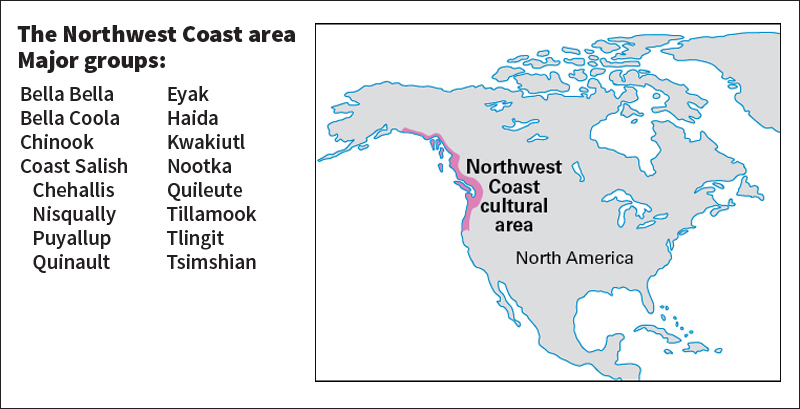Bella Coola are a First Nations people of western Canada. First Nations is a designation used in Canada for indigenous (native) groups. Most Bella Coola make their homes in the village of Bella Coola, which lies along the Bella Coola River in British Columbia . Many of them work for canneries, fisheries, or logging companies. Others have jobs in such cities as Vancouver and Victoria, British Columbia.

Most Bella Coola speak English, have attended Canadian schools, and live much like other Canadians. However, they still follow a number of traditional customs and maintain a distinct ethnic identity. They elect a governing body called a band council to administer matters concerning the Bella Coola band.
The ancestors of the modern Bella Coola were prosperous, seafaring fisherfolk and woodworkers for thousands of years. The Pacific Ocean and the region’s rivers provided abundant resources. The people trapped, speared, netted, and hooked fish. Their most important catches included eulachon, which provided oil, and salmon, which were eaten fresh or preserved by drying or smoking. They also gathered shellfish and seaweed. The Bella Coola built summer and winter villages of large plank houses on the banks of rivers and inlets.
The Bella Coola were highly conscious of social rank. Wealthy, socially prominent individuals held feasts called potlatches at which they gave their guests valuable gifts. Religious life centered around ceremonial dances and performances given by secret societies, and around potlatches. Woodworkers and other Bella Coola artists produced elaborate costumes, masks, and settings.
The first known contact between whites and the Bella Coola occurred in 1793, when Alexander Mackenzie , a Canadian fur trader and explorer, visited Bella Coola territory. At that time, there were at least 2,000 Bella Coola living in about 45 communities. They were divided into three ethnic and dialect groups, each of which spoke a different dialect of an indigenous language called Coast Salish. Outbreaks of smallpox and years of warfare with neighboring groups reduced the population to about 250 by 1929. Today, there are about 1,000 Bella Coola.
